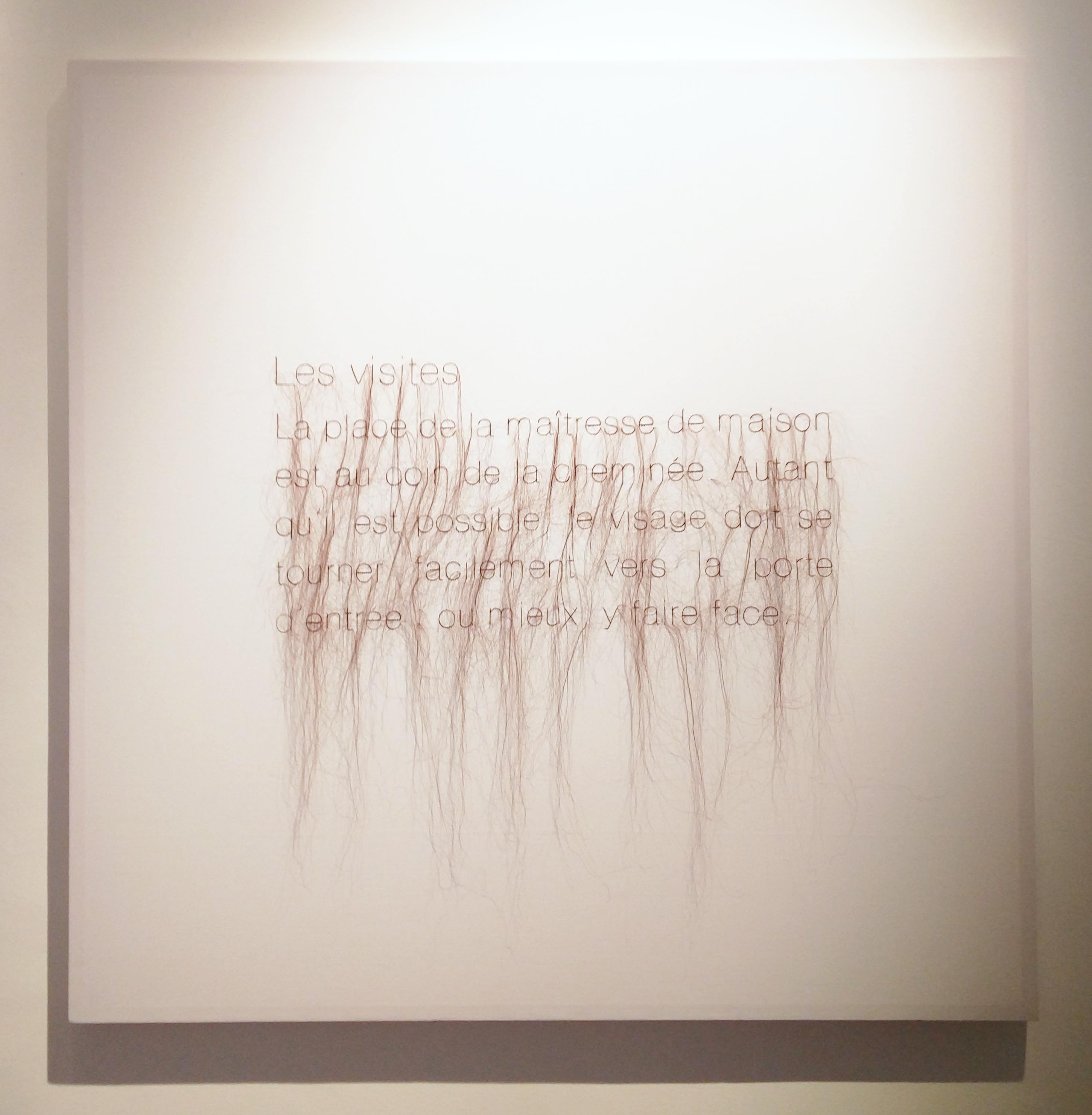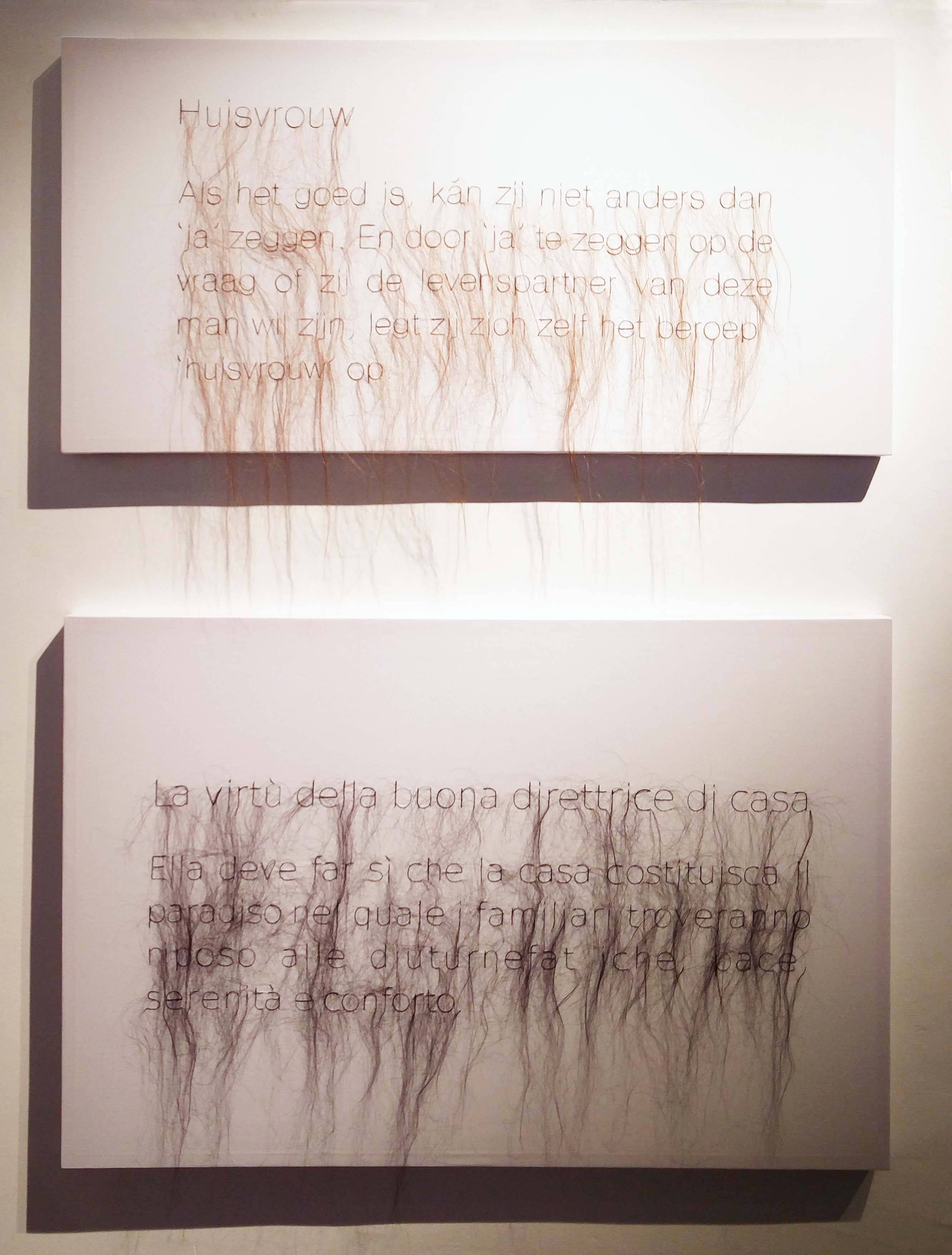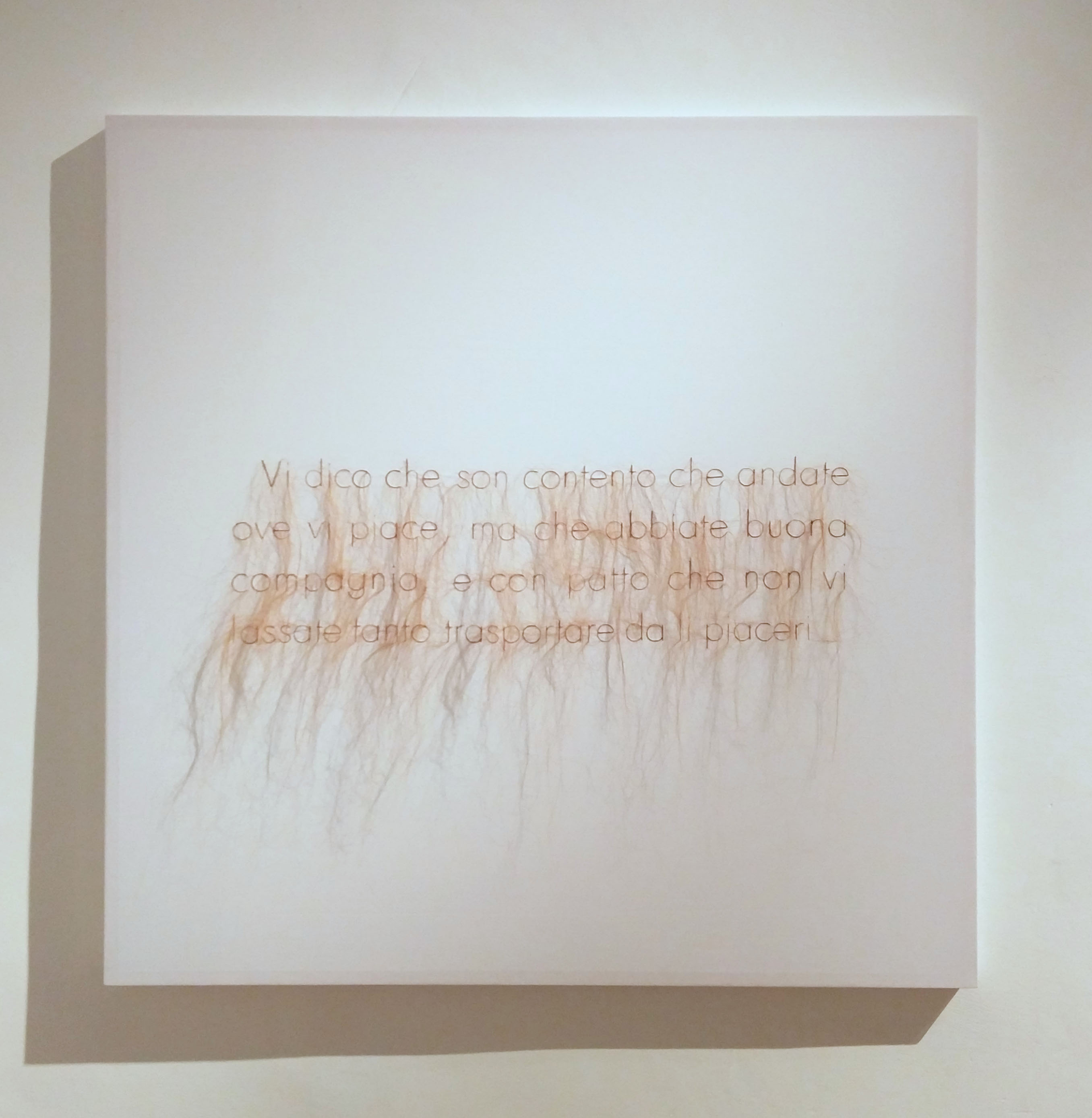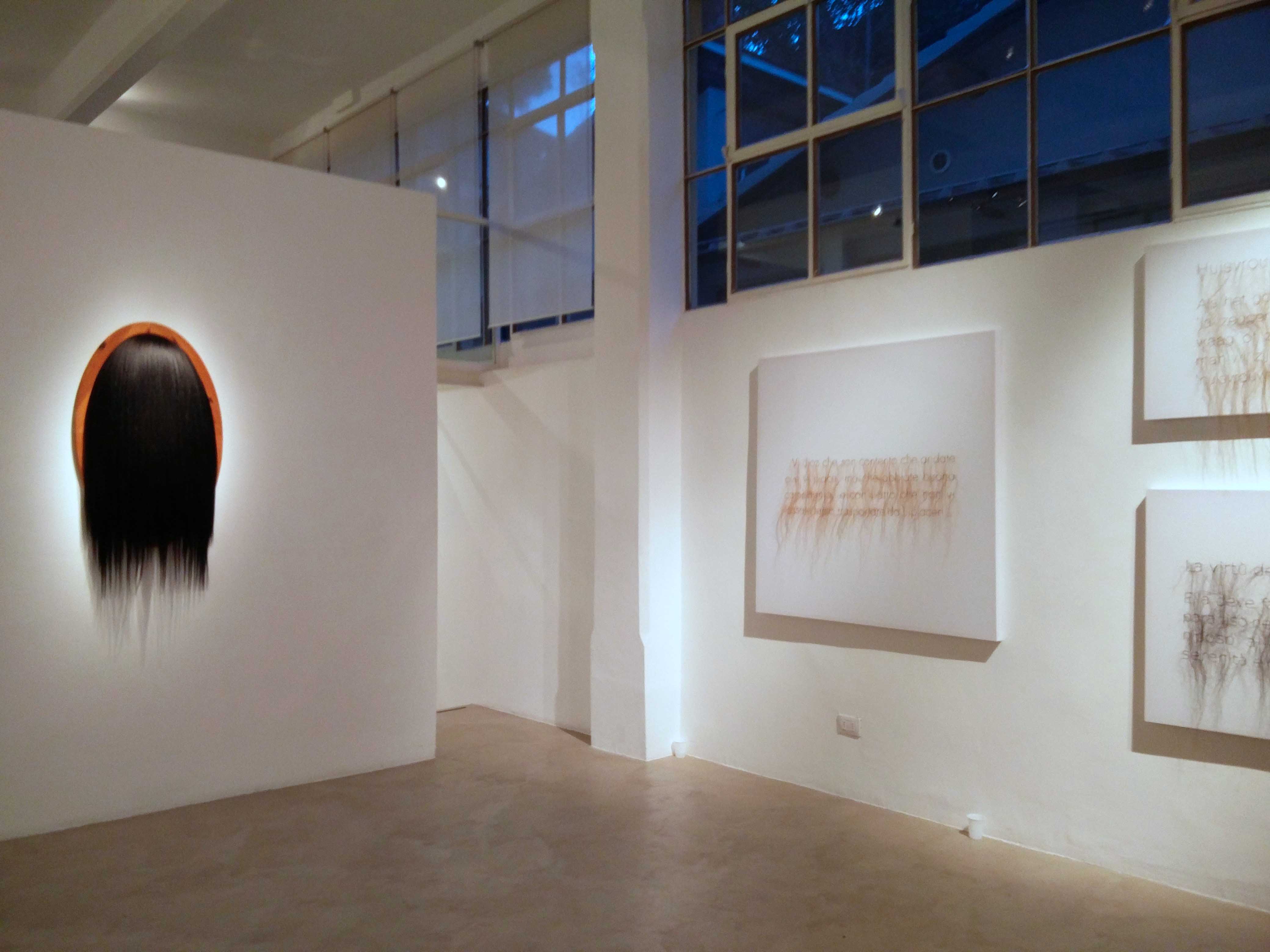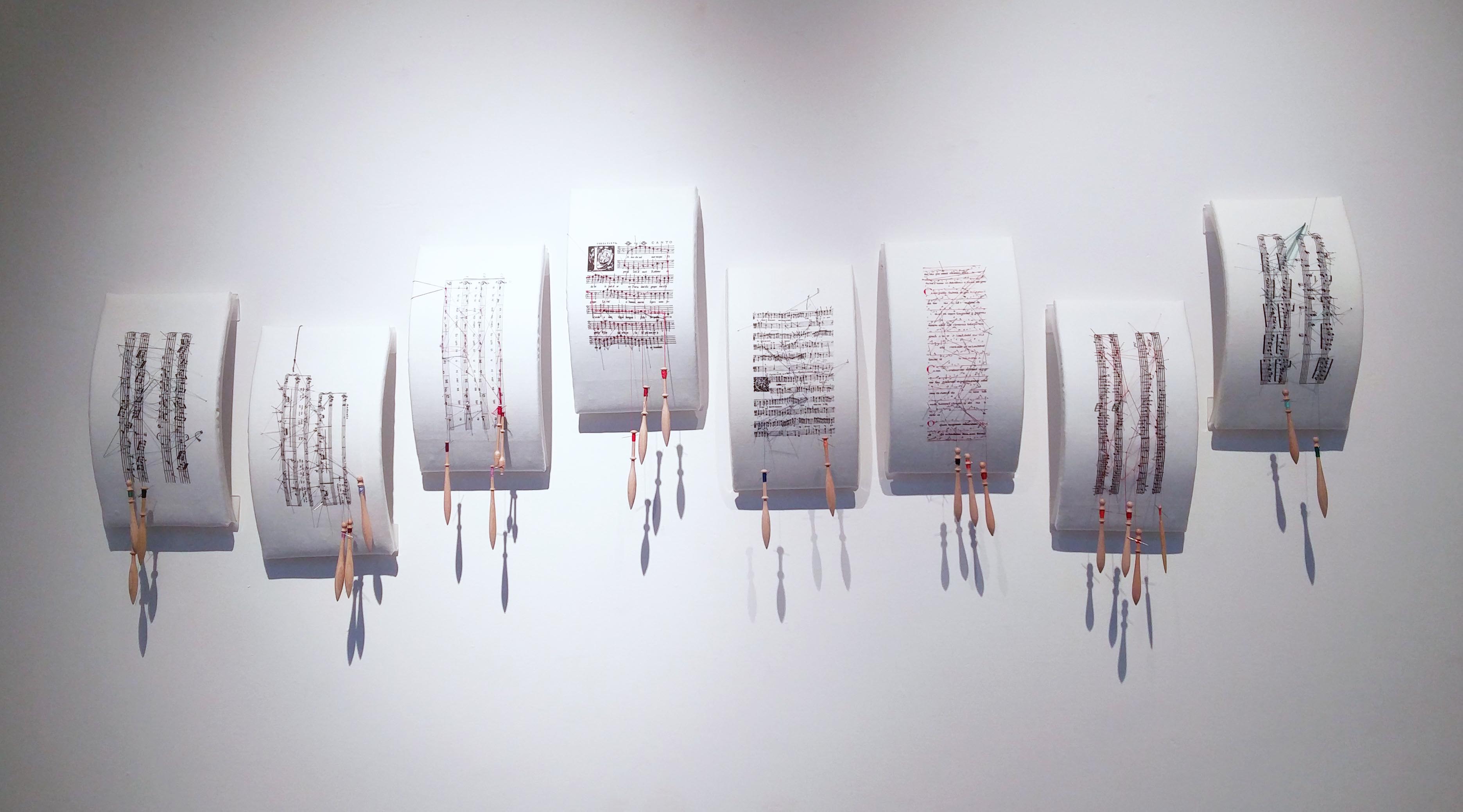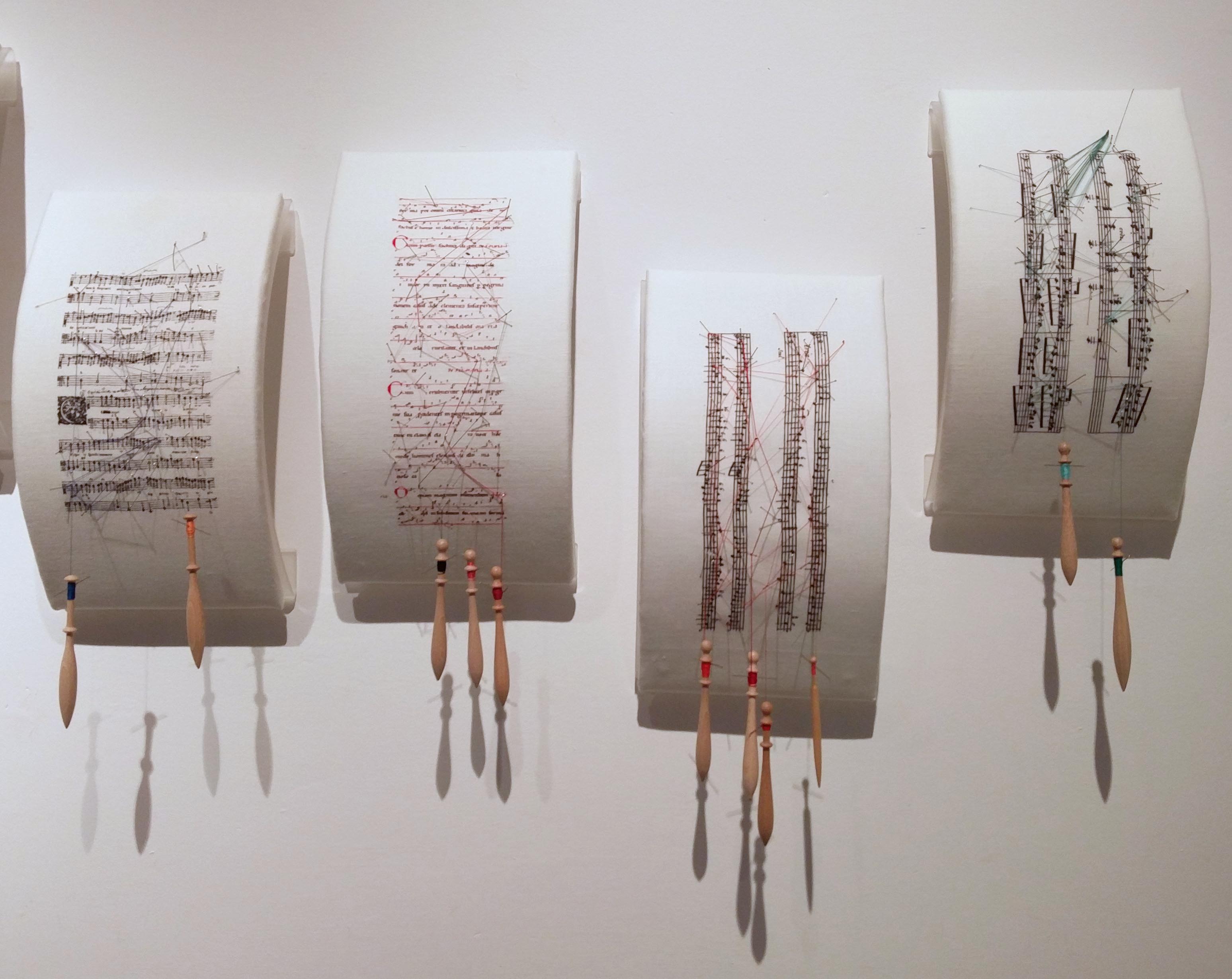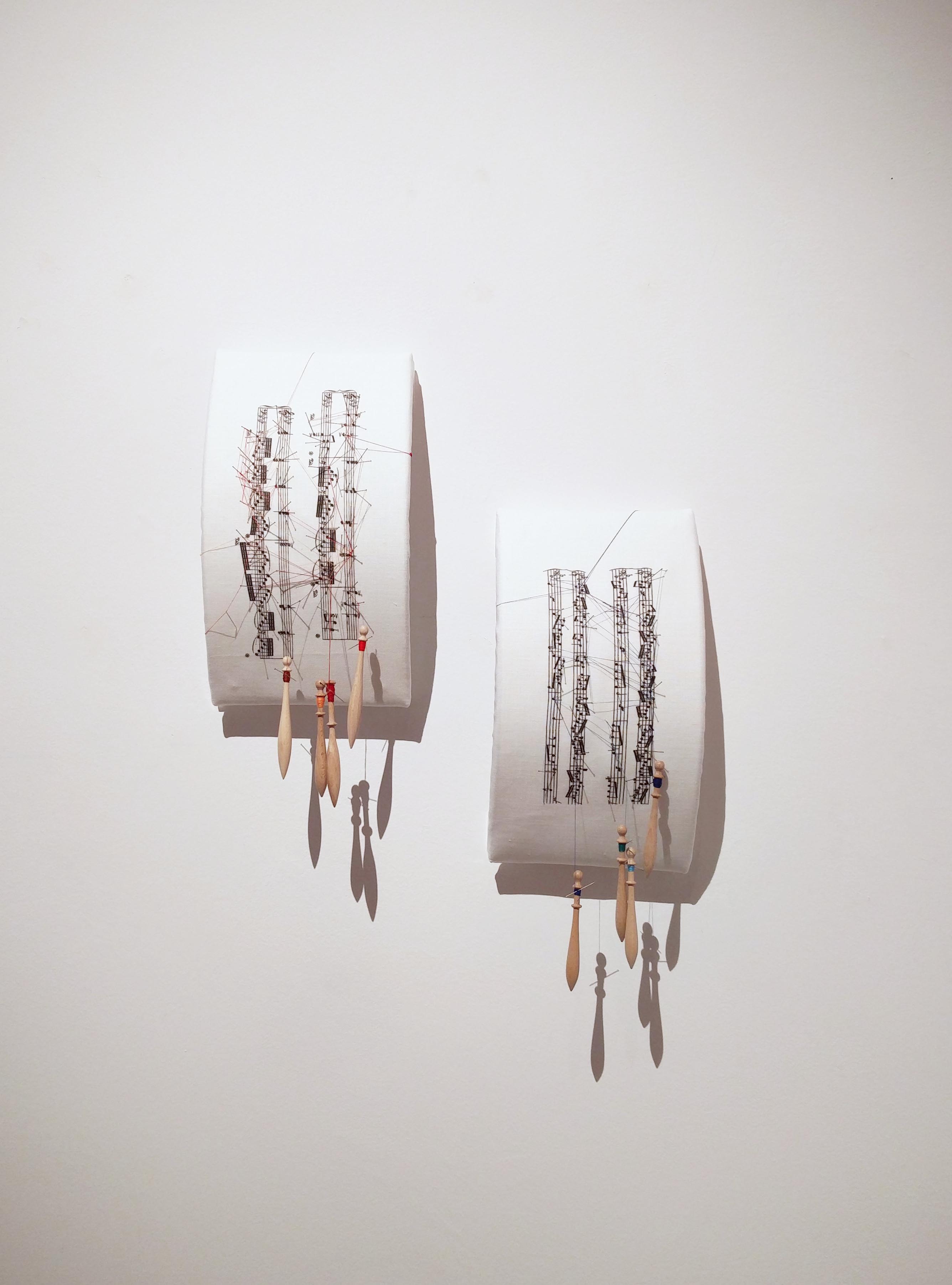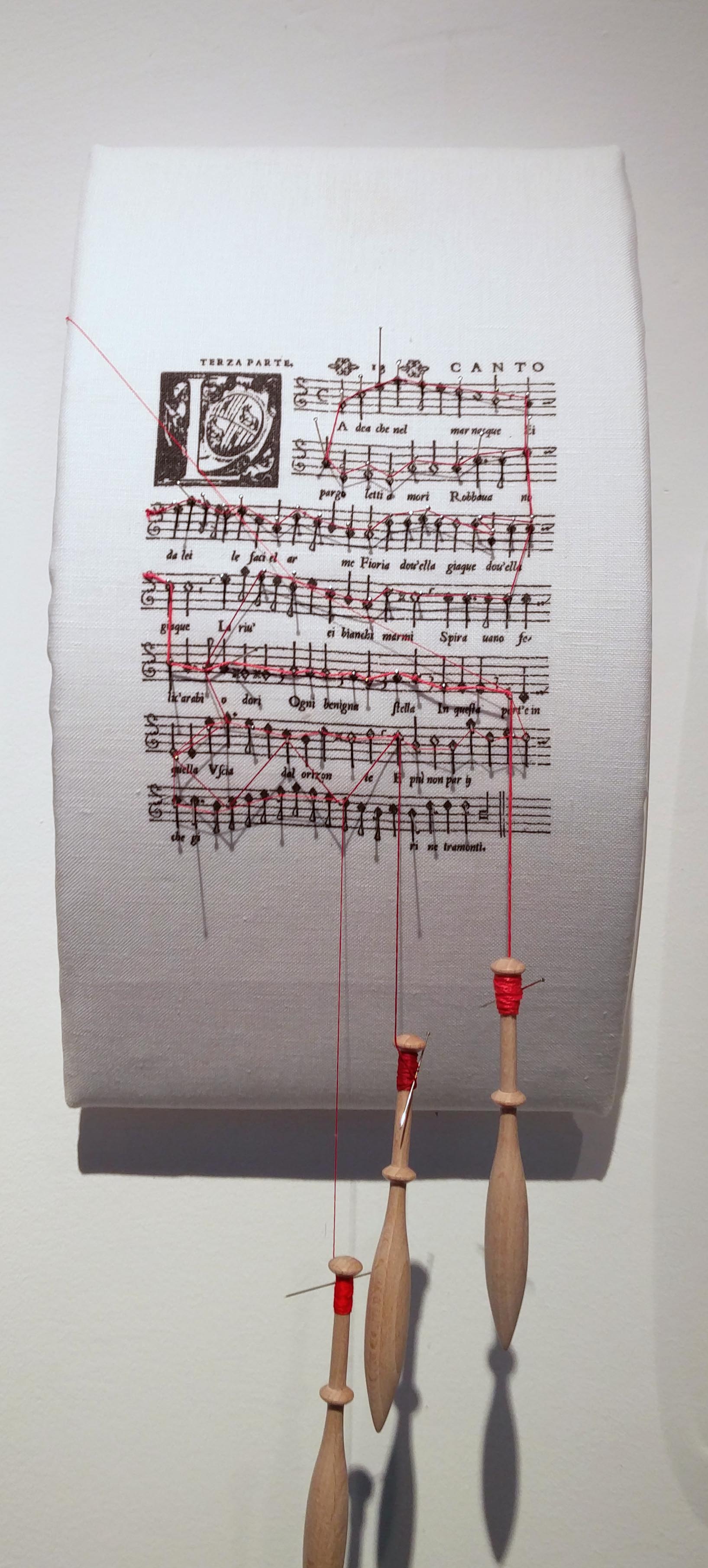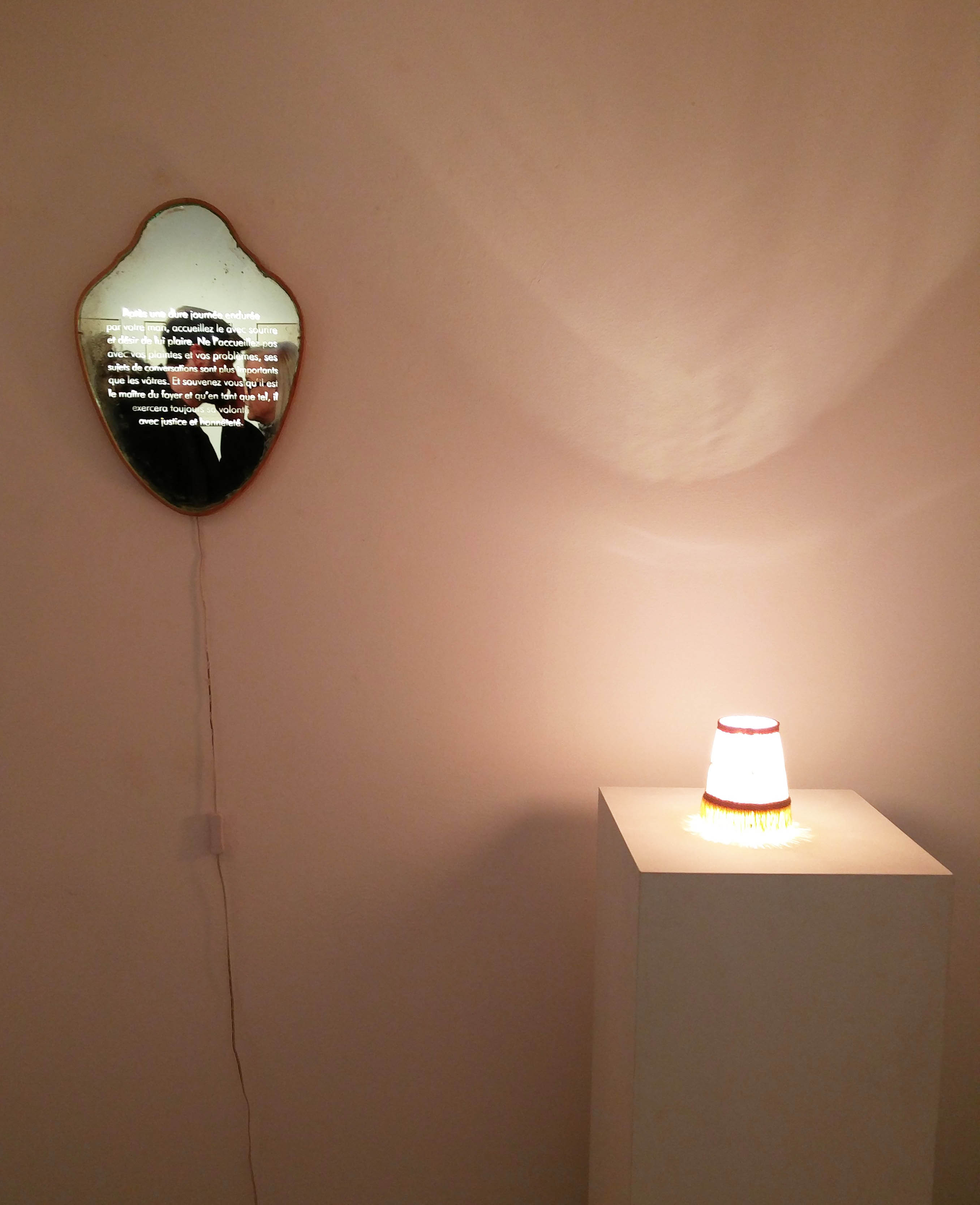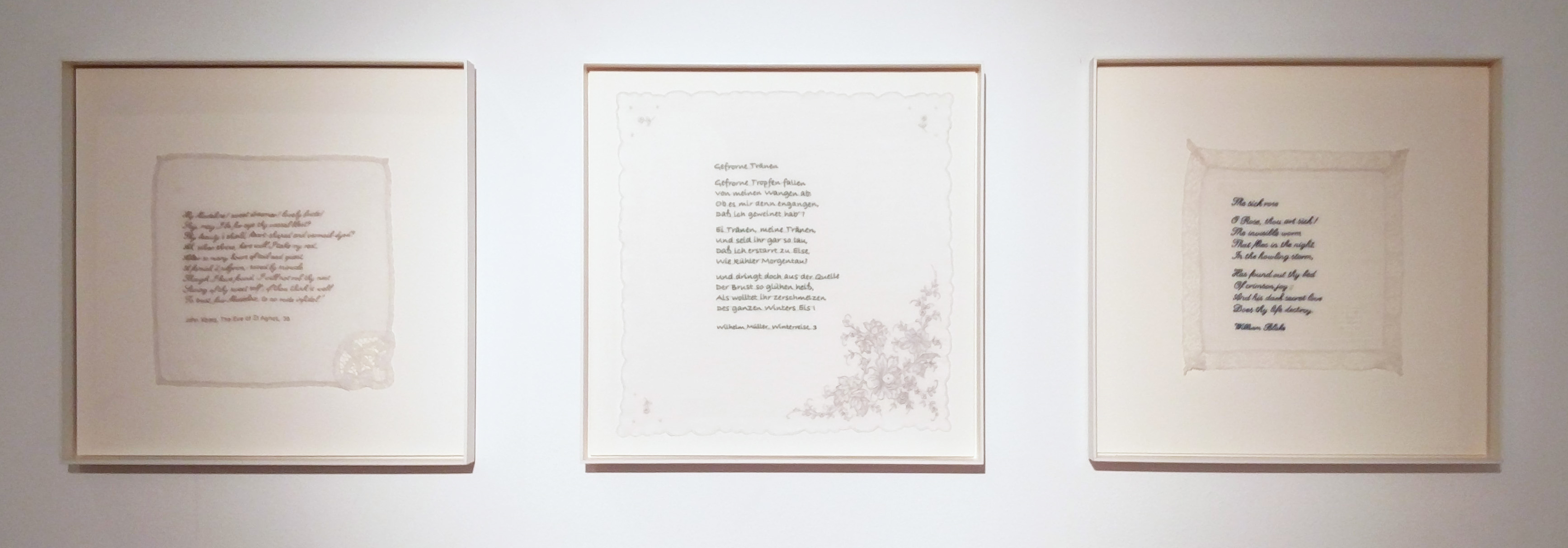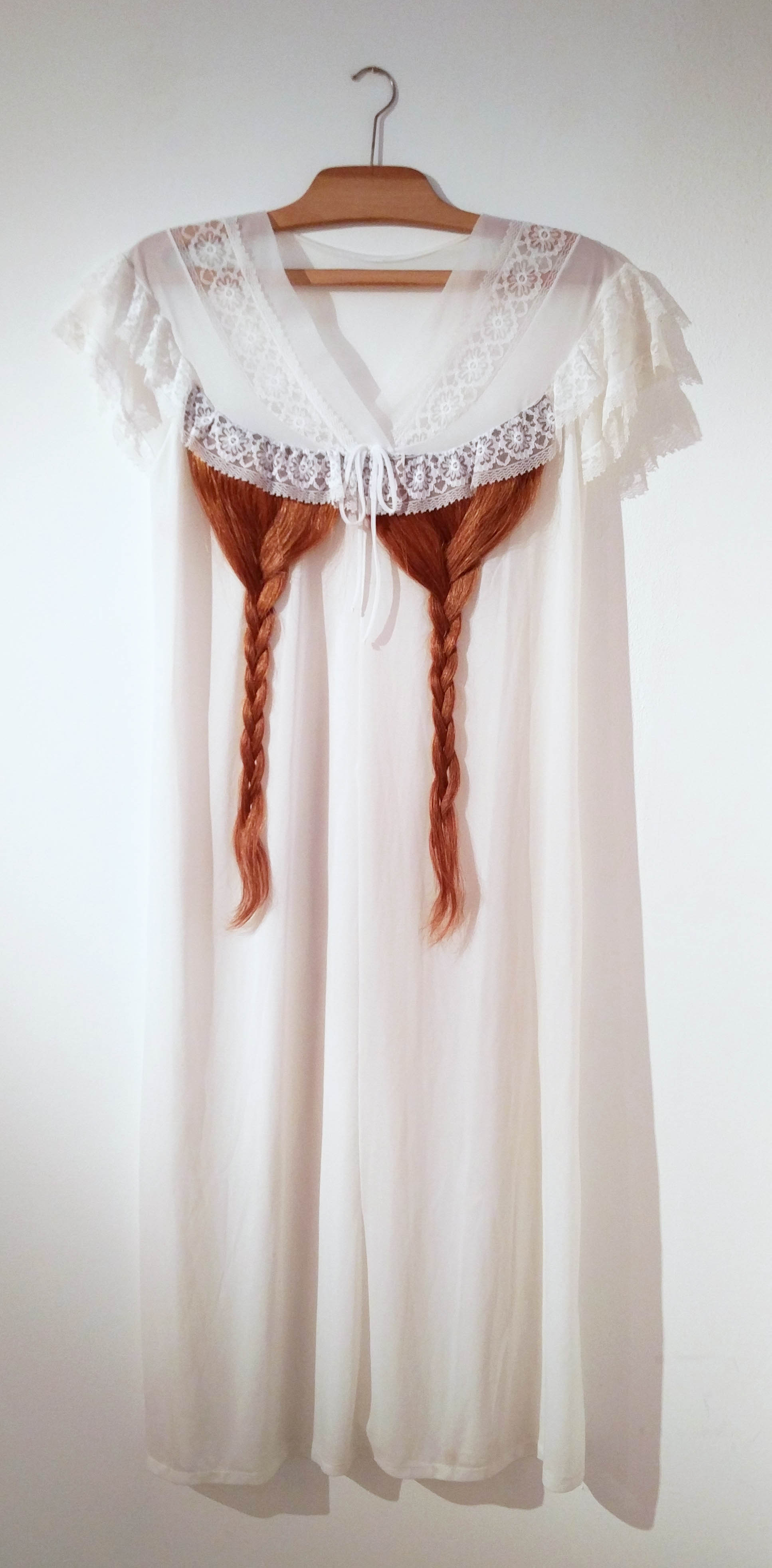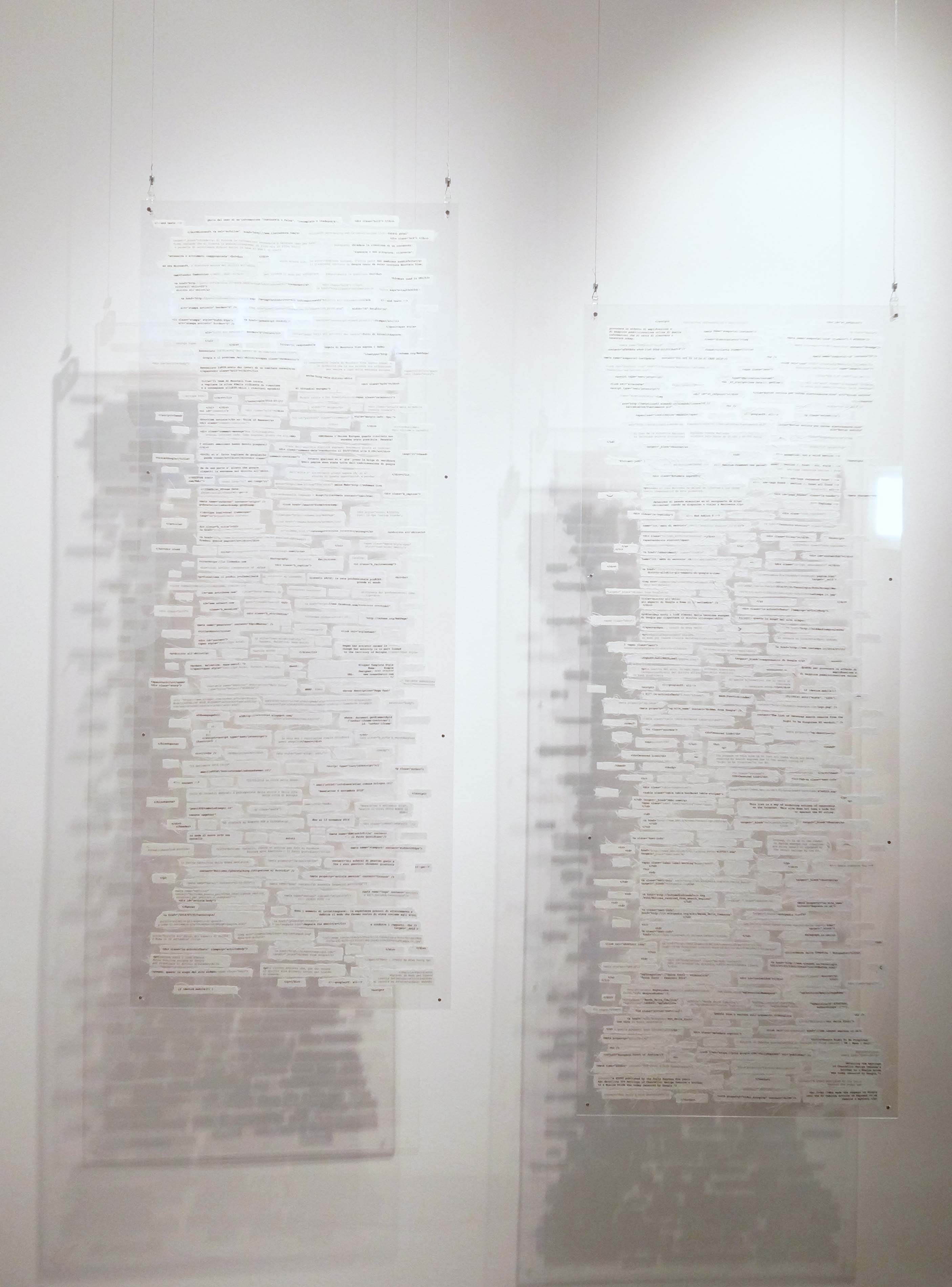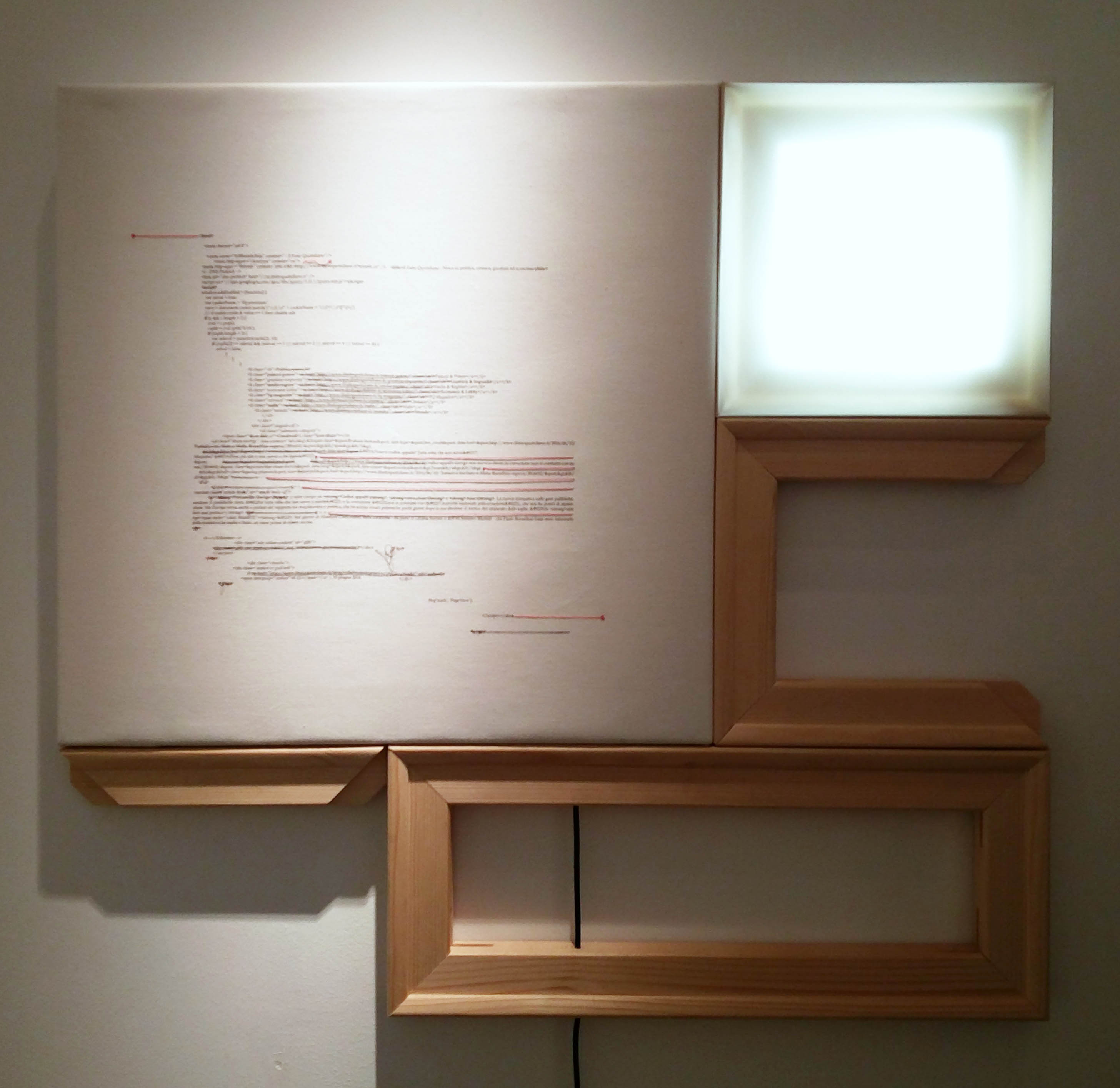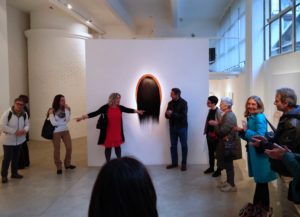 Contemporanea 2, Florence, Italy
Contemporanea 2, Florence, Italy
www.c2contemporanea2.com
12 – 27 April 2018
For the exhibition, “Fil Rouge” the Florence gallerist Antonio Lo Pinto invited Elyse Galiano and Donatella Lombardo, two artists with different backgrounds. However, there are common things in the works of both. Formally, the two artists are using – inter alia – textile and thread. Furthermore, they are questioning about female role models in society.
Entering the gallery Contemporanea 2, there are on the right wall four canvasses from Elyse’s series “Apoline, Constance et les autres …” (Apoline, Constance and the others …) She embroidered texts from ancient manuals of good manners for women. They are in French, Elyse’s mother tongue, Flemish, the language of her country of residence and Italian as homage to the hosting country of the exhibition. Remarkable, the stitches are not made with conventional threads, but with natural hair. The embroidery is executed so that parts of the hair can “escape”. It seems as if it is growing out of the text. Is it a rearing against the requirements made in the texts?
On the opposite wall, there are eight parts of Donatella’s series “Partiture mute” (Mute Scores), where she reproduced 20 compositions of female composers on segmental arches, recalling traditional lace pillows. Needles, connected by coloured threads are placed on the printed zone. The strings are ending in free suspended bobbins, to accentuate the impression of lace making. Often fallen into oblivion or published under masculine pseudonym, the musical creations are dating from the Middle Ages, Renaissance, Baroque or the 19th and early 20th century, originating from Italy, France and Germany.
A connection between the contrasting artworks is made by “Nue” by Elyse at the frontal wall. It is natural hair placed on wood and polyester so that it looks like a woman’s back of the head. Since antiquity, women’s hair symbolise the feminine beauty. Here, it underlines the artistic approach to female lives on both facing sides.
It is not accidental, that both artists decided to refer to textile handicraft, since it was female main occupation for centuries, besides bearing children, particularly in the upper classes. However, they are pointing to different aspects of female life. Elyse works with texts written to educate women to be modest and submissive. After decades of feminist movements and establishment of equal rights in many constitutions, it could be interpreted as an ironic comment of past conditions. Nevertheless, even nowadays, women often handle the bigger part of the domestic management and work. Equal pay is far to be standard. In consequence, she is pointing on still existing structures.
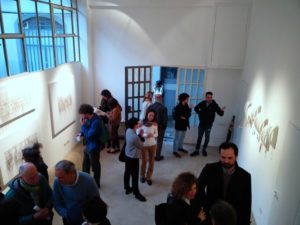 Whereas Donatella focuses on female creativity. Despite century long repression, women found ways to have a kind of freedom, often in monasteries. The re-materialisation of the music in musical notations gives evidence of the female inventiveness. Additionally, the reference to manufacturing of bobbin laces is a hint to this traditional handicraft in Sicily – Donatella’s home region – and at the same time a hint to other female occupations like spinning and stitching.
Whereas Donatella focuses on female creativity. Despite century long repression, women found ways to have a kind of freedom, often in monasteries. The re-materialisation of the music in musical notations gives evidence of the female inventiveness. Additionally, the reference to manufacturing of bobbin laces is a hint to this traditional handicraft in Sicily – Donatella’s home region – and at the same time a hint to other female occupations like spinning and stitching.
Both artists never met before this double exhibition. The connection was made by the Bolognese Gallery Spazio Testoni, where they had individual exhibitions in the past. For Paola Veronesi, the gallerist from Bologna, who collaborates regularly with Antonio Lo Pinto, the show’s title “Red Thread” refers not only to the material and to the common subject. Furthermore, it focuses on the East Asian legend that people are connected by a red thread, even though they don’t know each other: one day they will meet. For the occasion of the exhibition, there are not only the artworks, which communicate for the given time; also Elyse and Donatella met for the first time in Florence, half way between Sicily and Belgium.
For the second part of the show, the oeuvres are more separated. Elyse’s works are installed in a space reminding a private room: there is a bedroom lamp: “Les amabilités” (Friendliness); a mirror: “Après une dure journée” (After a hard day) and several “Ouvrages de dames” (The works of Ladies): stitched and framed handkerchiefs. All these oeuvres show again instructions of good manners for women. “De l’intime” (Of the intimate) is an ancient nightdress, completed with two natural hair pigtails.
In Donatella’s room, there are two “Colonne mediatiche” (Media Columns), where fragments of hypertext are enclosed behind Plexiglas. The texts are part of the artist’s digital life, conserved as part of the web’s memory. A questioning about public and private sphere in our digital time. “Inter/Azioni Mediatiche” (Media Inter/Actions) shows a part of a daily journal website, combined with extracts of articles of the print version, translated into the virtual version. It is a reflexion on the conveyance of information by print and digital medias. Even the virtual text is frozen on the linen support. Due to the material (linen) and the added red stitching lines Donatella re-enters formally into the red thread of the exhibition. Moreover, the media columns are communicating with Elyse’s private room.
Read More:
Artwork of the month / March 2018
Elyse Galiano
Huisvrouw (Housewife)
From the series: Apolline, Constance et les autres …
Artwork of the month / February 2017
Donatella Lombardo
Partitura n.1
From the series: Partiture mute

